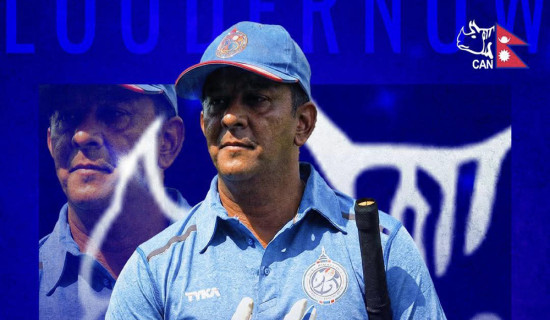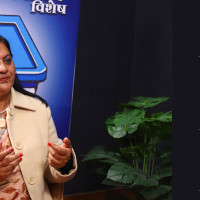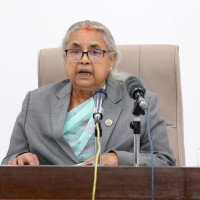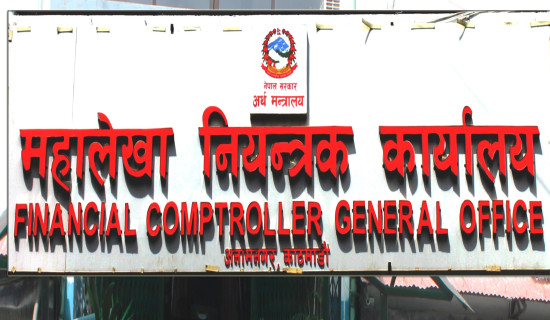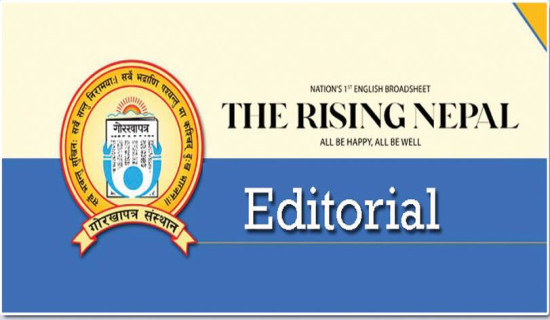- Tuesday, 16 December 2025
Gen Z Revolt: A Generational Reckoning
A lot has been written about the youth uprising against the CPN-UML-Nepali Congress coalition government on September 8 and 9 and the political unravelling thereafter. Series of events of those two days shook the nation to the core and attracted widespread international attention after it resulted in tragedy and destruction of the scale that Nepal had never seen before — deaths of dozens of youths, most of them students in uniform, burning of Singha Durbar, the principal secretariat of the government which bears the legacy of history, office of the president, the Supreme Court building, police posts, government offices. Just in two days. The scale of damage and destruction was horrifying.
But the rage that erupted was not surprising. Frustration among youths had long been simmering. It only needed a few sparks. I can tell you this with some self-assumed authority because I have been dealing with these youths, the Gen Zers, for over a decade as a senior high school and college teacher. Let the obvious be stated first of all: Not all who identify themselves as Gen Zers, or as their supporters, were responsible for the criminal acts that occurred—arson, looting, vandalism, and theft—on September 9. Those involved in such acts must be held accountable, regardless of affiliation.
Idealistic teens
But Gen Zers as such are not criminals. They are just like we were in our teens and 20s—dreaming big, worrying about the future, eager to make something of themselves. They are passionate, idealistic, sometimes stubborn or emotionally impulsive. They are impatient for change, and like all young people, they have their faults — the faults of youth, not of character. They want success. They are full of aspirations and expectations. They want politics and government to be transparent, fair and just.
They want quick results; the encumbrance they face, for example, in getting a driving license, piques them, and the hassles they are subjected to while obtaining a no-objection certificate (NoC) to go abroad for further studies send them home full of rage. In other words, they are like you and me when we were young; they are like our daughters and sons now. Largely informed, and misinformed as well, by social media, they build their opinions based on what they see on reels and posts.
Though often thought of by politicians as the cohort that does not understand politics and does not keep interest in politics, the Gen Zers were actually watching what was happening: A political system drowning in corruption, where public posts were auctioned off to the highest bidder, where high-profile politicians themselves were involved in human trafficking. Nobody would face the trial for wrongdoings, especially if they were close to the ruling parties. Those linked to ruling parties were spared. Those outside the power nexus faced harassment and jail. With opposition parties so weak or discredited, the ruling parties ran roughshod over what the general people wanted. Absolute power corrupted them absolutely.
The person they looked up to as a symbol of hope (like it or not, the mayor of Kathmandu was/is a youth icon) was constantly vilified as if he were the source of all problems. Students wrote about him when asked to describe someone they admired. When they saw the political and bureaucratic establishment unite to sabotage even what they saw as hope, their despair turned into rage. With media (exceptions aside), appearing complicit in rationalising their wrongdoings, Nepal’s Gen Zers were venting their frustration on social media platforms. But when the government banned those platforms, the ones that Gen Zers mostly used, they knew the government was now hell-bent on shutting the voices against corruption and misrule.
The trauma of loss — the violence, the deaths, the fires, the destruction — is still fresh in Nepali consciousness. Yet the nation must be healed anyway. It’s time to honour the lives lost by committing to the very vision they believed in: A corruption-free society with ethical leadership, with good governance, accountability, and fairness. For this, it has to start with justice. First, those responsible for the shooting of innocent students on September 8 must be identified and prosecuted. Equally, those who set fire to Singha Durbar, the Supreme Court, and other institutions on September 9 — regardless of their age or affiliations — must be held accountable. Gen Zers should support, not hinder, this process of justice.
Prevalence of impunity
The prevalence of impunity is one of the enduring scourges in the country. None of the reports of the high-level commissions to investigate the atrocities during the movement—whether that of 1990 or 2006/07—have been implemented. Rarely has anyone faced consequences. This cycle must end and, for this, someone must be bold enough to say: “Punish everyone who committed wrongdoing—even if it includes me.” Today, Nepal’s police force looks demoralised, uncertain, and broken. Their trust and confidence must be restored. A country dies when its security system is fragile, broken or vulnerable.
When any force derails from its original goals and vision, you risk becoming irrelevant, your intentions are questioned (such as on which foreign country’s behest did you do so and so on) and your own acts and follies vindicate the position of the very forces that you dislodged out of power in the first place. Gen Zers spearheaded this revolt for a future that would be much better off than during the Congress-UML ugly majoritarianism. The Gen Zers and the interim government together must commit to building a Nepal where they — and future generations —can look back on this moment not with regret, but with pride.
(Paudyal is a journalist and educator based in Kathmandu.)



